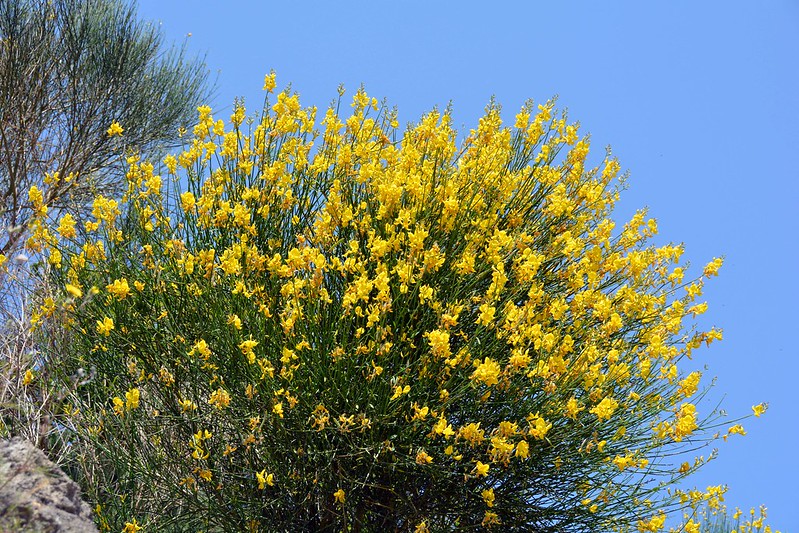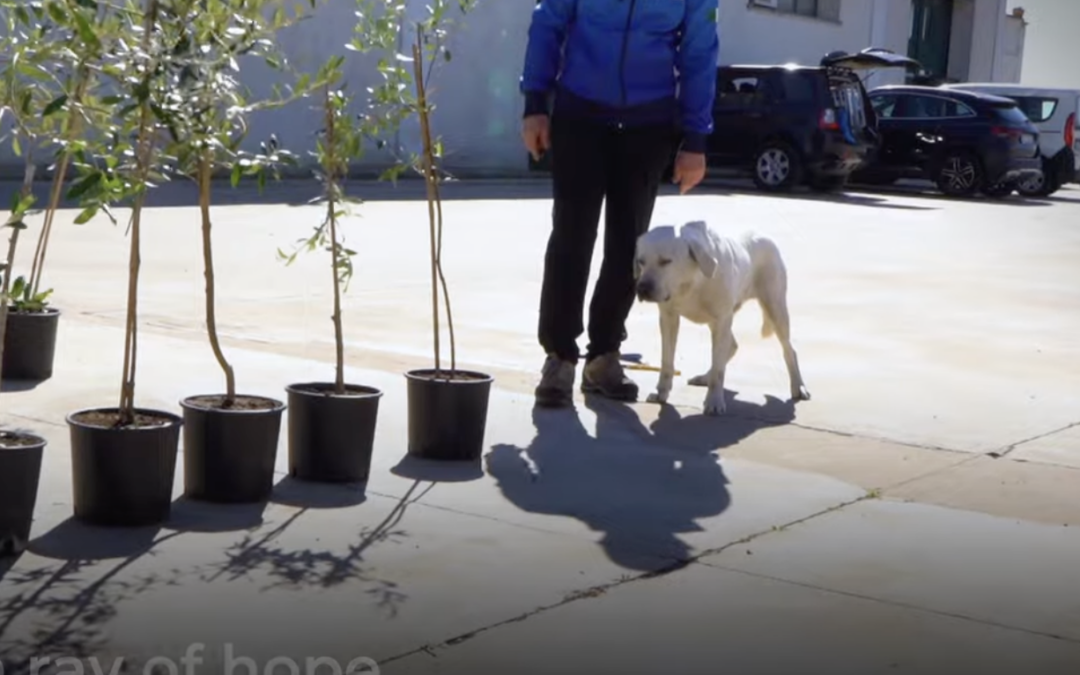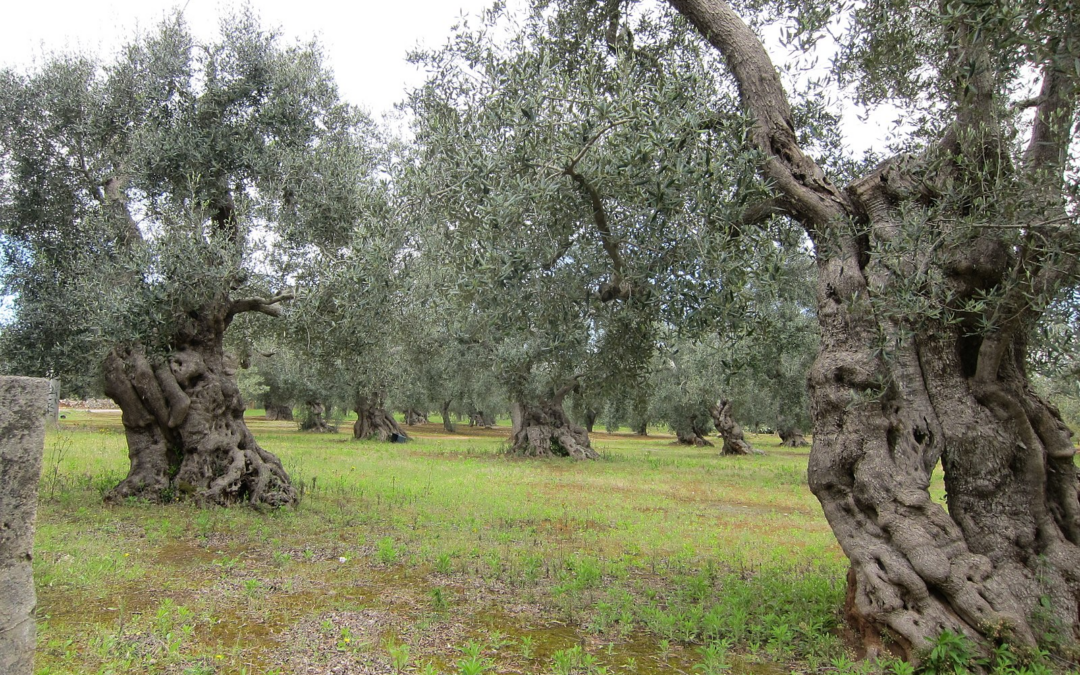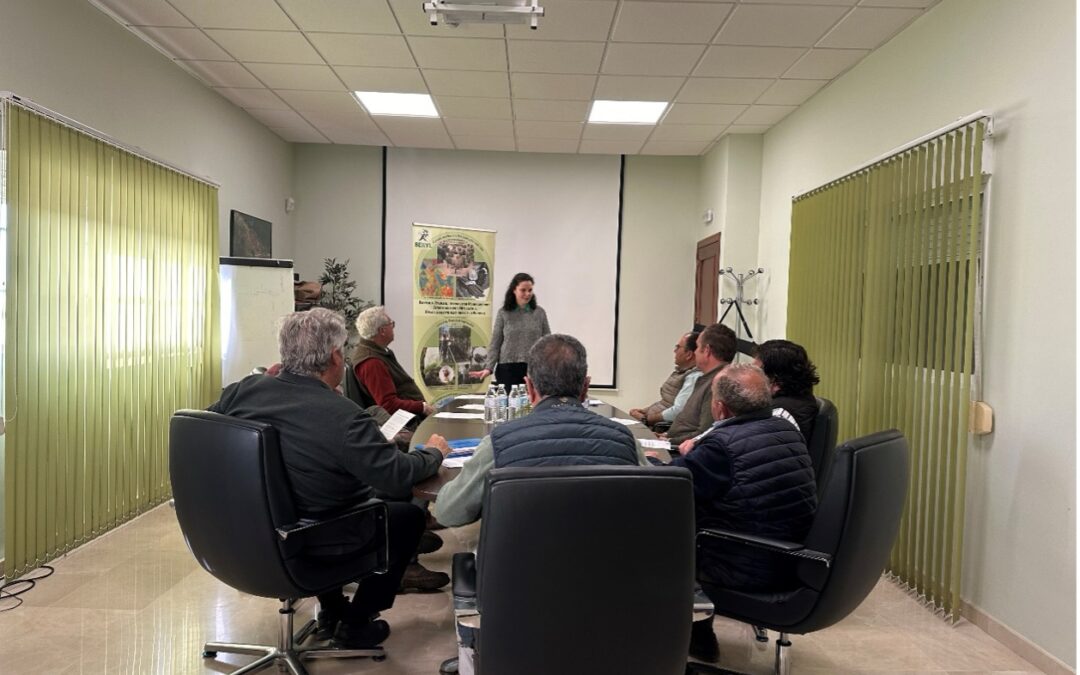Research is moving forward and exploring new grounds to manage the current EU Xylella fastidiosa outbreaks, rapidly detect the new ones, and prevent further introductions in Europe, top world experts highlighted in the 4th European Conference on Xylella fastidiosa, held in Lyon, France, on 20 August as part of the International Congress on Plant Pathology. More than 200 participants animated the event, organized by the European Food Safety Authority (EFSA), with the contribution of the BeXyl Project, Biovexo, the European Research Council (ERC) Multi X project, Euphresco, and the European Commission. On top of 23 oral presentations by scientists from Europe, Brazil, Israel, and the USA, more than 50 researchers presented their posters. On 19 August, the conference program included the documentary The Era of Giants screening. The film reflects on the cultural, social, and economic impact of X. fastidiosa in Apulia.
Xf in Europe
Maria Belen Márquez García from the European Commission opened the first session of the conference, focused on the status and research updates on X. fastidiosa in the EU, recalling that the pathogen is currently present in 4 EU Member States, where the affected areas have been demarcated for the control of the pest. The EU official provided background information on the EU outbreaks and the evolution of the legislation for managing them from a “one-size-fits-all” approach to more tailored and context-sensitive measures. Data provided by EU research have played a significant role in that development, the co-chair of the conference and BeXyl project leader Blanca B. Landa underlined in her concluding remarks. EU institutions are currently considering slight changes to the 2020 legislative framework.
As partially anticipated in an interview for the BeXyl website, the research manager at the IPSP-CNR Donato Boscia presented data showing that the spread of X. fastidiosa in Apulia is slowing down, both in the diffusion northward and in the South of the region. After the talk of Jessica Dittmer from INRAE unveiling the pathogen dynamics after its introduction in France, Manuel Anguita-Maeso (University of North Carolina, USA, and IAS-CSIC) handed out the results of research on the effect of X. fastidiosa infection on olive microbiome. Lena Pesenti from UC Louvain discussed the potential risk for X. fastidiosa to establish in temperate European regions, such as Belgium. In the conference conclusions, the EFSA Panel on plant health chair Claude Bragard emphasized the need of further research on the latter aspect.
Resistance and Control
The conference co-chair and head of EFSA’s Plant Health Risk Assessment Team Giuseppe Stancanelli opened the second session on the pathogen resistance and control, providing the latest updates on the EFSA database of the X. fastidiosa host plant species, an essential tool for research, risk assessment and risk management. The BeXyl work package leader Ofir Bahar presented encouraging results on identifying and characterizing a X. fastidiosa resistant almond genotype. Host plant resistance is the most practical, efficient, and cost-effective strategy for managing plant diseases. Xylella fastidiosa makes no exception, and scientists have identified two resistant olive cultivars already, as confirmed by the presentation of Pasquale Saldarelli from IPSP-CNR. The difficulty of new findings in that direction, Maria Saponari (IPSP-CNR) explained in the concluding remarks of the conference, relies on the knowledge gap on the availability of the olive genome compared to other species (such as grapevine). But breeding the resistant cultivars has considerable potential, as researchers discovered that resistance is transmitted to the progeny. National projects in olives are about to start in Italy, Saponari said.
Renata Assis from UC Davies and Nancy Her from UC Riverside presented two studies on the immune response of grapevines against X. fastidiosa, shedding new light on resistance mechanisms. Luis Alejandro Moll from the University of Girona illustrated how selected or newly designed peptides can affect the bacterium viability, hamper biofilm formation, and induce defense responses in the plant. Currently, researchers are testing several peptides to evaluate their efficacy in controlling X. fastidiosa infection.
Vectors’ biology
The X. fastidiosa vectors biology session brought to light the vast amount of knowledge and data accumulated by European scientists on Philaenus spumarius. This spittlebug is the primary vector of the pathogen in the continent. Nicola Bodino from IPSP-CNR presented on the insect’s reproductive biology and egg parasitoids. Júlia López-Mercadal (Universitat de les Illes Balears) talked about the factors driving the presence, abundance, and pathogen transmission of P. spumarius and Neophilaenus campestris, another vector of X. fastidiosa in the EU. Alberto Fereres from ICA_CSIC, one of the task leaders of the BeXyl Project, shared data for building a predictive model to adopt timely actions to control the population of P. spumarius. Astrid Cruaud (INRAE) illustrated a screening method to test the vectors for the presence of X. fastidiosa, using them as sentinels of plant diseases.
In Brazil, researchers are investigating the role of a not identified vector insect – genus Clastoptera – as the potential primary agent of the spread of X. fastidiosa in olive orchards, Joao Lopes of the University of Sao Paulo explained. Lindsey Burbank from the US Department of Agriculture (USDA) handed out the ability of glassy-winged sharpshooter (Homalodisca vitripennis, the vector of X. fastidiosa causing Pierce’s disease in grapevines) to acquire X. fastidiosa, subspecies pauca (Apulian strain, De Donno),from olive varieties grown in California. In the concluding remarks, Rodrigo Almeyda from UC Berkeley noted the lack of studies on transmission mechanisms in European vectors. Cruaud encouraged researchers to focus also on other potential vectors of X. fastidiosa, besides P. spumarius.
Surveillance and detection
In the final session, two presentations by Miguel Roman-Ecija (IAS-CSIC) and Pablo Zarco-Tejada from the University of Melbourne provided a “from the ground to the sky” update on research on X. fastidiosa surveillance and detection technologies at leaf, crown and orchard level. Experts agreed that the combination of proximal and remote sensing tools (airborne or satellites) has significant potential far beyond the purposes of early detection as an accelerator of research in other areas, especially in the breeding programs for new varieties. In two talks from Spain, Maria del Pilar Velasco-Amo (IAS-CSIC) described the use of plasmid profiles in epidemiological surveillance of X. fastidiosa, and Martina Cendoya (IVIA) offered an assessment of the outbreak response plans for X. fastidiosa in Alicante. Pauline De Jerphanion, from the French Epidemiological Plant Health Surveillance Platform, illustrated the experience of France in bringing together multidisciplinary expertise to support risk management. Alice del Bianco, who led the organization of the conference for EFSA, described the functioning of RiPEST, an EFSA tool for designing more robust and harmonized pest surveys in the EU.
“Collaboration remains our guiding star”, Giuseppe Stancanelli said. The conference, he added, “highlighted preparedness and early detection as key tools in the fight against X. fastidiosa, while showcasing the tangible results that EU-funded research is delivering against major threats to Europe’s agricultural and environmental heritage”.
All the presentations will be available soon on the conference page.
Gallery


















Video presentation
The #Xylella23 Conference highlighted the many avenues science is pursuing to combat Xylella fastidiosa. For that aim, the BeXyl project explores all the possible solutions.
Find an overview in the video below








